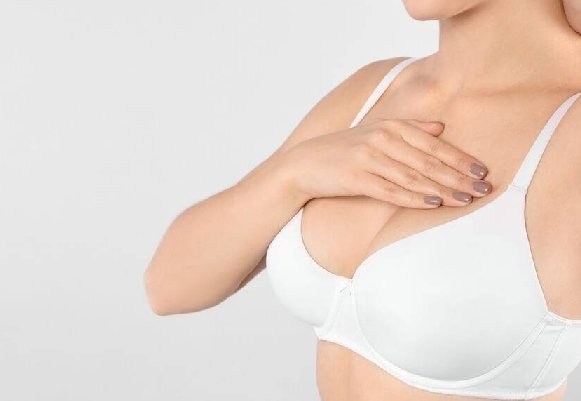Preparation for Breast Augmentation
- ConsultationDiscuss implant types, sizes, and desired appearance with your surgeon.
- Smoking Cessation: Stop smoking at least six weeks prior to surgery to promote better healing.
- Pre-surgical Tests:Undergo necessary tests to ensure fitness for surgery.
- Fasting: Avoid eating for several hours or overnight before the surgery.
- Medication Adjustment: Cease or adjust certain medications as advised by your doctor.
- Detailed Instructions: Follow all pre-operative instructions provided by your doctor.
Benefits of Breast Augmentation Surgery
- Improved Body Image and Confidence: Enhances self-esteem by improving body contour.
- Symmetry Correction: Addresses and corrects breast asymmetry.
- Youthful Appearance: Provides a rejuvenated and aesthetically pleasing look.
- Reconstruction: Essential for restoring breast shape post-mastectomy.
Breast Augmentation Procedure
- Anaesthesia: Administered general anaesthesia.
- Incision’s: Surgeons can use various techniques for incisions:
- Inframammary: Under the breast crease.
- Transaxillary: In the armpit.
- PeriareolarAround the nipple.
- Transumbilical: Above the belly button.
- Implant Placement: Use a tissue expander to create space for the implant.
- Saline Implants: Inserted empty and then filled with saline.
- Silicone Implants: Pre-filled with silicone gel.
- Closure: Use dissolvable or traditional stitches to close the incision, followed by applying a dressing.
- Post-surgery: Patients may need to wear a surgical bra during the healing period.
Risks of Breast Augmentation
Breast augmentation, like any surgical procedure, comes with potential risks and complications. Understanding these risks is essential for anyone considering this surgery.
Infection
- Description: Infections can occur at the incision site or around the implant.
- Symptoms: Redness, swelling, pain, and discharge from the incision site.
- Prevention/Treatment: Strict adherence to post-operative care instructions, antibiotics, and possibly surgical intervention.
Scarring
- Description: Visible scars may form at the incision sites.
- Factors: Healing ability, surgical technique, and post-operative care.
- Minimization: Proper wound care, using silicone sheets or scar creams.
Bleeding
- Description: Excessive bleeding can occur during or after surgery.
- Symptoms: Swelling, bruising, and significant pain.
- Prevention/Treatment: Careful surgical techniques, avoiding certain medications before surgery, and possible drainage.
Capsular Contracture
- Description: Formation of hard scar tissue around the implant, causing it to feel firm or misshapen.
- Symptoms: Hardening of the breast, discomfort, and changes in breast shape.
- Prevention/Treatment: Massage techniques, medication, or surgical intervention to remove or replace the implant.
Reaction to Anaesthesia
- Description: Adverse reactions to general anaesthesia used during surgery.
- Symptoms: Nausea, vomiting, dizziness, and in rare cases, more severe complications.
- Prevention/Treatment: Thorough pre-operative assessment and monitoring during surgery.
Difficulty in Breastfeeding
- Description: Challenges in producing enough milk or latching the baby.
- Factors: Implant placement and type of incision.
- Prevention/Treatment: Pre-surgical consultation about breastfeeding goals, post-surgical lactation support.
Lack or Loss of Sensation
- Description: Numbness or altered sensation in the nipple and breast area.
- Factors: Nerve damage during surgery.
- Prevention/Treatment: Surgical skill, with most cases improving over time.
Leaking or Ruptured Implant
- Description: The implant shell can break, causing silicone or saline to leak.
- Symptoms: Changes in breast shape, pain, or swelling.
- Prevention/Treatment: Regular monitoring and possible surgical replacement of the implant.
Rippling of the Implant
- Description: Visible wrinkles or folds on the surface of the breast.
- Factors: Implant type, placement, and the amount of natural breast tissue.
- Prevention/Treatment: Choosing the right implant type and placement, corrective surgery if needed.
Pain
- Description: Persistent pain in the breast area post-surgery.
- Factors: Surgical technique, healing process, and individual pain tolerance.
- Prevention/Treatment: Pain management strategies, including medication and physical therapy.
Recovery and Follow-Up Care
- Post-operative Care: Follow specific instructions for incision care and pain management.
- Incision Care: Keep the incision site clean and dry, and possibly wear compression garments.
- Follow-Up AppointmentsRegular visits to the surgeon to monitor healing progress.
- Pain Management: Use prescribed medication to manage pain and discomfort.
- Swelling ManagementWear compression garments to reduce swelling and support healing.
- Physical Activity: Avoid strenuous activities until cleared by your surgeon.
- Breast Massage: Some surgeons recommend breast massage to help implants settle and reduce capsular contracture risk.
Frequently Asked Questions
Is breast augmentation painful?
Some pain and discomfort are associated with surgery, varying by individual, and can be managed with prescribed medication.
Is breast lift cheaper than implants?
The cost varies based on procedure type, surgeon's experience, location, and implant type. A breast lift surgery might be less expensive than augmentation with implants, but it depends on various factors.
Can you breastfeed with breast implants?
Breastfeeding is generally possible post-augmentation, though success can depend on the surgery type and incision location. Discuss potential risks with your doctor before surgery.
How long does breast augmentation surgery take?
Typically, breast augmentation surgery lasts 2 to 3 hours, while a breast lift can take 2 to 4 hours, depending on individual needs and anatomy.
For personalised consultation around breast augmentation in Delhi, contact Kalosa Aesthetic to schedule a consultation with Dr. Ashish Khare.
